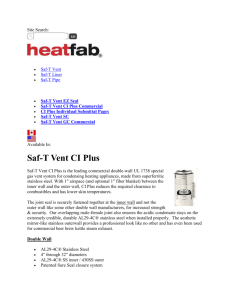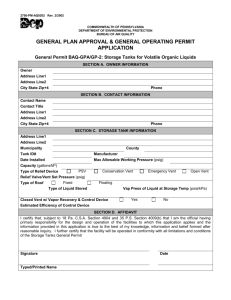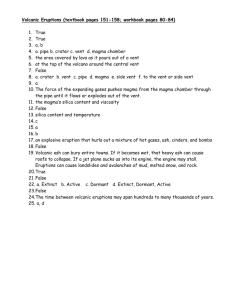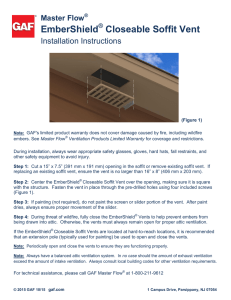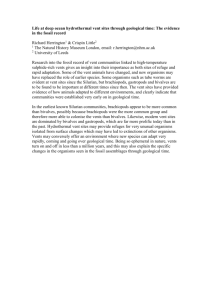Locating the New Water Heater (cont’d) Facts to Consider About the WARNING
advertisement
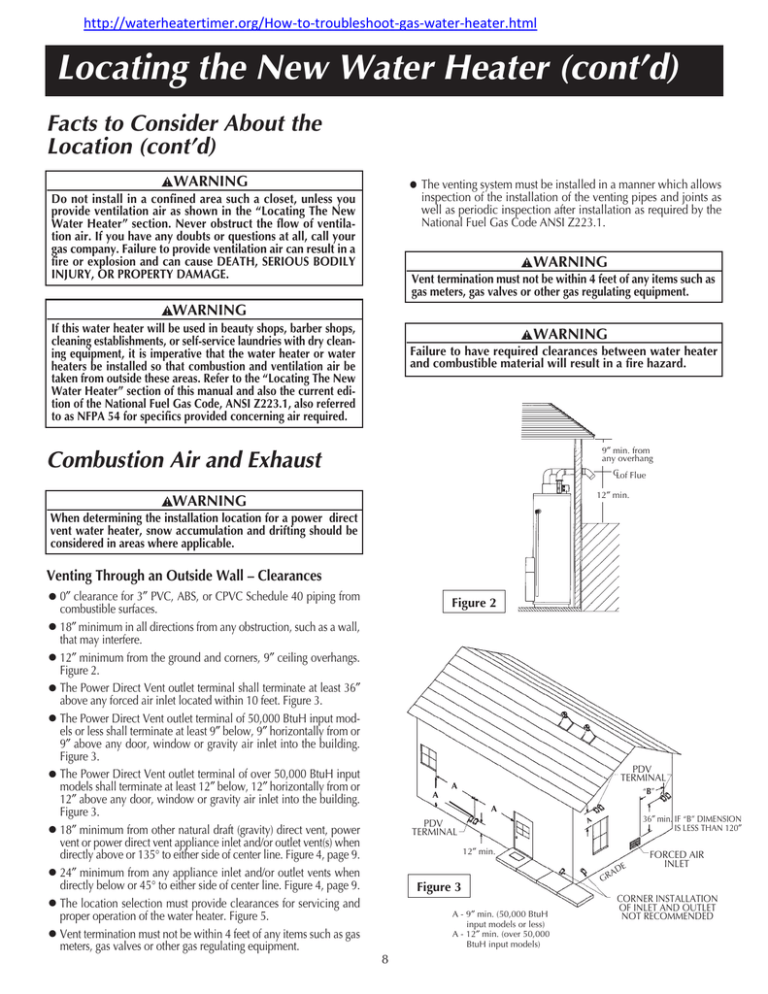
http://waterheatertimer.org/How-to-troubleshoot-gas-water-heater.html Locating the New Water Heater (cont’d) Facts to Consider About the Location (cont’d) WARNING venting system must be installed in a manner which allows • The inspection of the installation of the venting pipes and joints as Do not install in a confined area such a closet, unless you provide ventilation air as shown in the “Locating The New Water Heater” section. Never obstruct the flow of ventilation air. If you have any doubts or questions at all, call your gas company. Failure to provide ventilation air can result in a fire or explosion and can cause DEATH, SERIOUS BODILY INJURY, OR PROPERTY DAMAGE. well as periodic inspection after installation as required by the National Fuel Gas Code ANSI Z223.1. WARNING Vent termination must not be within 4 feet of any items such as gas meters, gas valves or other gas regulating equipment. WARNING If this water heater will be used in beauty shops, barber shops, cleaning establishments, or self-service laundries with dry cleaning equipment, it is imperative that the water heater or water heaters be installed so that combustion and ventilation air be taken from outside these areas. Refer to the “Locating The New Water Heater” section of this manual and also the current edition of the National Fuel Gas Code, ANSI Z223.1, also referred to as NFPA 54 for specifics provided concerning air required. WARNING Failure to have required clearances between water heater and combustible material will result in a fire hazard. 9″ min. from any overhang Combustion Air and Exhaust CLof Flue 12″ min. WARNING When determining the installation location for a power direct vent water heater, snow accumulation and drifting should be considered in areas where applicable. Venting Through an Outside Wall – Clearances clearance for 3″ PVC, ABS, or CPVC Schedule 40 piping from • 0″ combustible surfaces. Figure 2 minimum in all directions from any obstruction, such as a wall, • 18″ that may interfere. minimum from the ground and corners, 9″ ceiling overhangs. • 12″ Figure 2. Power Direct Vent outlet terminal shall terminate at least 36″ • The above any forced air inlet located within 10 feet. Figure 3. Power Direct Vent outlet terminal of 50,000 BtuH input mod• The els or less shall terminate at least 9″ below, 9″ horizontally from or • • • • • 9″ above any door, window or gravity air inlet into the building. Figure 3. The Power Direct Vent outlet terminal of over 50,000 BtuH input models shall terminate at least 12″ below, 12″ horizontally from or 12″ above any door, window or gravity air inlet into the building. Figure 3. 18″ minimum from other natural draft (gravity) direct vent, power vent or power direct vent appliance inlet and/or outlet vent(s) when directly above or 135° to either side of center line. Figure 4, page 9. 24″ minimum from any appliance inlet and/or outlet vents when directly below or 45° to either side of center line. Figure 4, page 9. The location selection must provide clearances for servicing and proper operation of the water heater. Figure 5. Vent termination must not be within 4 feet of any items such as gas meters, gas valves or other gas regulating equipment. A PDV TERMINAL A “B” A 36″ min. IF “B” DIMENSION IS LESS THAN 120″ A PDV TERMINAL 12″ min. E D RA Figure 3 A - 9″ min. (50,000 BtuH input models or less) A - 12″ min. (over 50,000 BtuH input models) 8 FORCED AIR INLET G CORNER INSTALLATION OF INLET AND OUTLET NOT RECOMMENDED Locating the New Water Heater (cont’d) VENT OUTLET 6 1/2″ MIN. 24″ MAX. 18 ″ 18 Venting Through Roof – Clearances AIR INTAKE • 0″ clearance for 3″ PVC, ABS, or CPVC Schedule 40 piping from combustible and noncombustible surfaces. The vent exhaust outlet and air inlet terminals shall terminate at least 18 inches above the roof surface. Figure 7. The venting system must be installed in a manner which allows inspection of the installation of the venting pipes and joints as well as periodic inspection after installation as required by ANSI Standards. ″ • • 24″ 45° NATURAL DRAFT (GRAVITY) DIRECT VENT, POWER VENT, OR POWER DIRECT VENT APPLIANCE INLET AND/OR OUTLET VENT(S). VENT PIPE SEPARATION The inlet and outlet vent pipes must be separated by a minimum distance of 6 1/2 inches up to 24 inches maximum. Figure 4 Must maintain adequate service and maintenance accessibility. 45° VENT CAP W/SCREEN Range of degrees available for vent pipe installation. 90° STREET ELL 18″ Figure 5 WIRE FENCE When the water heater outlet terminal is low enough to be touched accidentally, or is accessible to small children, a wire mesh chain link fence (as shown in Figure 6) may be used. Care should be taken to maintain adequate ventilation around the outlet terminal. If a chain link fence is installed, it must not be used as a storage area for items that may block proper ventilation. Figure 7 Air for Ventilation for Appliances Located in Confined Spaces NOT TO BE USED AS A STORAGE AREA Air for ventilation should be provided if installed in a confined space. Refer to the National Fuel Gas Code, ANSI Z223.1. Figure 6 9
